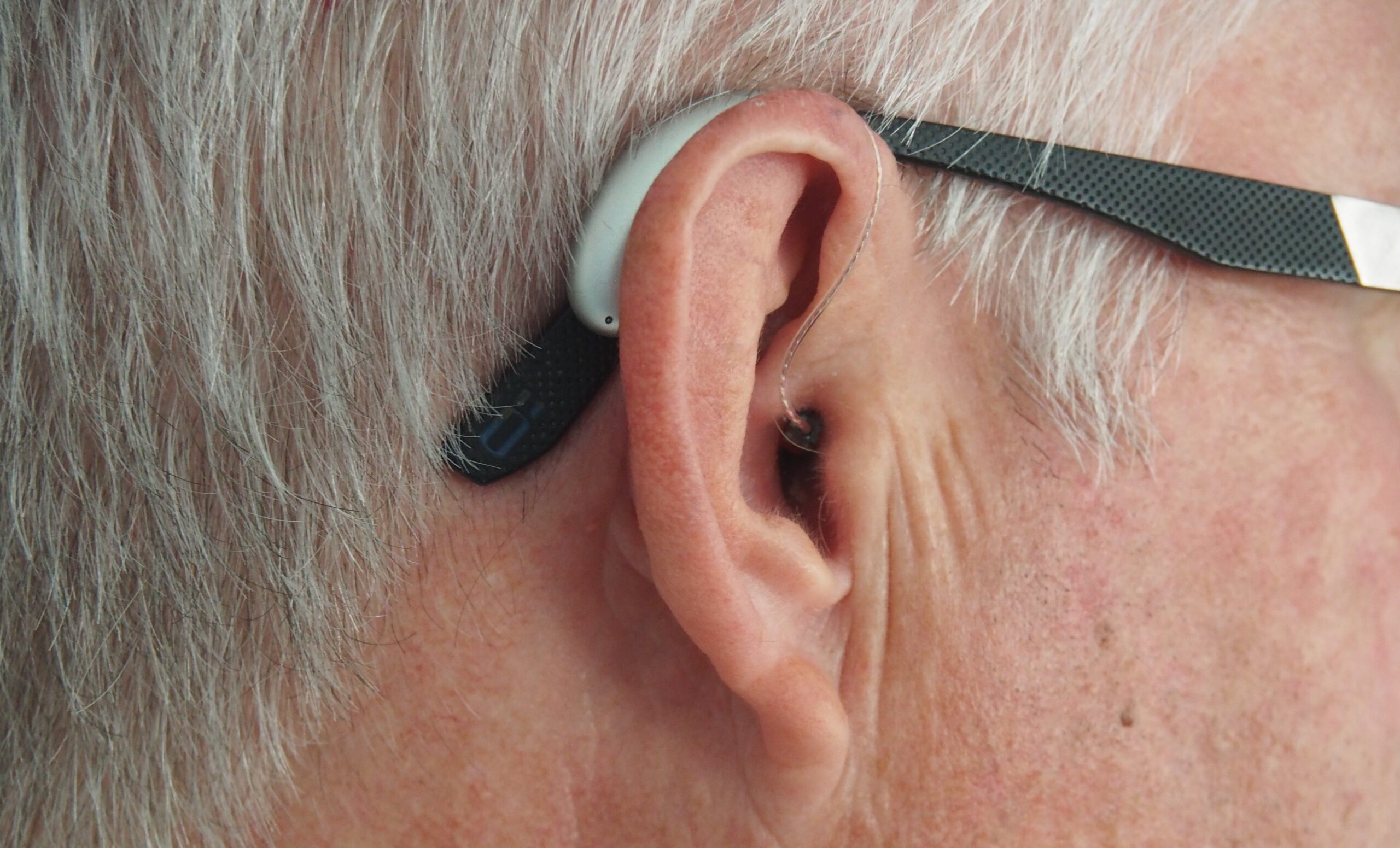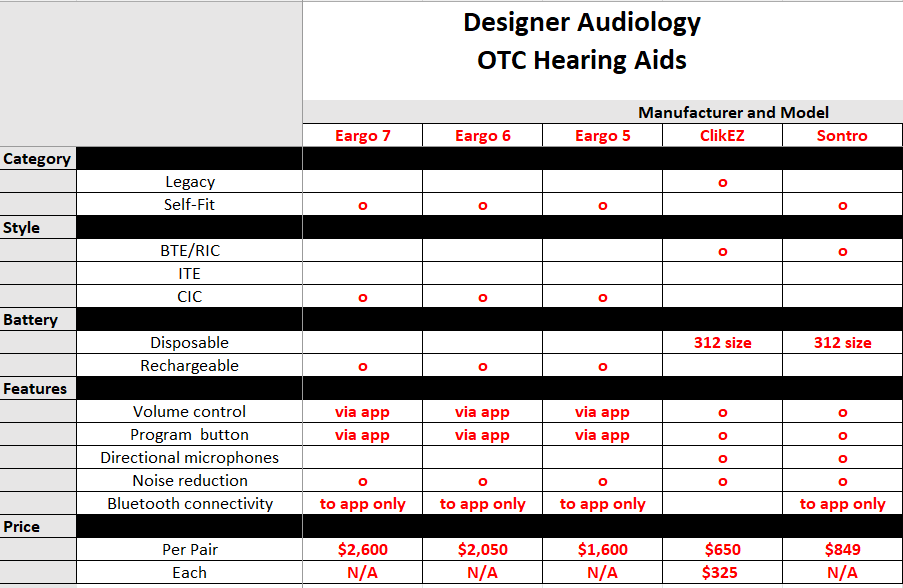Over The Counter (OTC) hearing aids are becoming more prevalent since national legislation was passed and the Food and Drug Administration (FDA) released their final rule in 2022. OTC hearing aids are available from a variety of companies without the need to visit a provider (e.g., audiologist, physician). Designer Audiology broke down the process of obtaining OTC hearing aids into 3 steps.
The first step is to determine if a medical evaluation is necessary. Step two determines the hearing acuity need, as OTC hearing aids are intended for adults with perceived mild to moderate hearing loss. Step Three is to find the right features products for your lifestyle.
OTC hearing aids will have many different styles (size) and features. Typically, the smaller the size and the more features, the more expensive the OTC hearing aid.
First, determining how the OTC hearing aids are programmed is important. The Food and Drug Administration (FDA) divides the over the counter options into two categories:
- Traditional (legacy) devices
- Self-fitting devices
Traditional, or legacy devices, are often pre-programmed with the most common settings for individuals with perceived mild to moderate hearing loss and the user simply chooses from the pre-set options. A volume control may be available.
Self-fitting devices typically require a smartphone to program the hearing aids and may require the user to download a proprietary app and complete a hearing test as part of the set-up. After the initial set-up, the smartphone app may allow for further customization of the OTC hearing aids.
Style, or size, is the next consideration. Purchasing OTC hearing aids does not require a professional (e.g., audiologist) to be involved in the process; therefore, the style or size of an OTC hearing aid will be a stock size – the same for every device sold (one size fits most). A behind-the-ear (BTE) hearing aid will have a thin tube or wire with a dome on the end that is inserting into the ear canal. These hearing aids often have more features, since they are larger and the battery (or rechargeable battery) lasts longer. An OTC hearing aid that is in-the-ear (ITE) or completely-in-the-canal (CIC) is inserted into the ear canal and may be considered more cosmetically appealing. To determine the best style of OTC hearing aid for you, ask yourself these questions:
- Are you concerned with the appearance of hearing aids?
- If yes, a CIC style may be preferred.
- If no, all styles are available.
- How long do you intend to wear the hearing aids?
- Less than 8 hours; all styles are available.
- Eight hours or more; a BTE style may be preferred.
Battery options should be considered next. There are two options for batteries:
- Disposable batteries
- Rechargeable batteries
Individuals who travel often, or do not have access to electricity every night (such as while camping) may prefer disposable batteries that can be changed immediately and on-the-spot. Rechargeable batteries require their own battery charger (included with the purchase) and typically need to be charged every night for a minimum of 4 hours.
The last consideration are the features in the OTC hearing aids. Today’s hearing aids are all digital and therefore offer a plethora of features. As noted, the more features, typically the more expensive. The most common features individuals may want to consider are:
- Volume control
- Listening programs for specific environments (e.g., restaurants, music)
- Directional (dual) microphones
- (Background) Noise reduction
- Bluetooth connectivity
Features may depend on the style/size of the device and the battery requirements. For example, a volume control may be available on a BTE hearing aid but may require a smartphone app with an ITE or CIC hearing aid. Directional microphones require more space and are not available on CIC devices. To utilize Bluetooth connectivity, a specific antenna is inserted into the OTC hearing aids, which also requires more space.
After determining the category, style/size, batteries, and features, finding OTC hearing aids that meet your needs will be significantly easier. Designer Audiology has put together a chart of the OTC hearing aids offered at the practice (not all inclusive).
When shopping, remember that no provider is required to be involved; however, you can choose to visit an audiologist for hearing testing and recommendations before purchasing OTC hearing aids, but you will be required to pay for their time and expertise. Audiologists can also help after the purchase of OTC hearing aids if you want more customization, testing of the devices, cleaning tips and supplies, counseling, or rehabilitation to maximize the benefits.
A few other tips:
- Check return policies for any OTC hearing aids purchased
- Check the warranty for repairs and loss/damage beyond repair for any OTC hearing aids purchased


